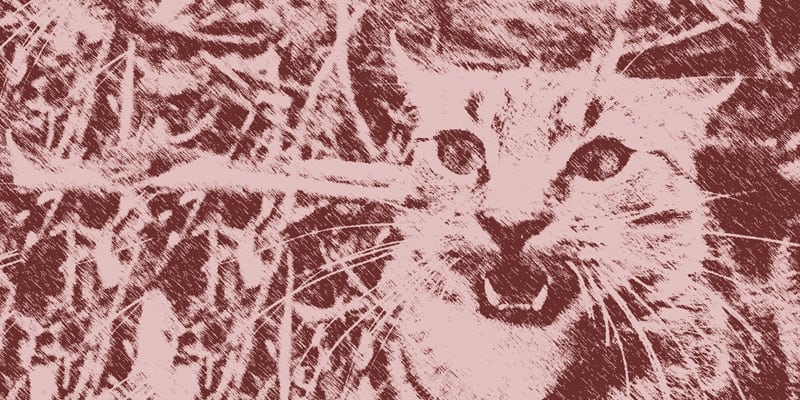The Biosecurity Bill is set to pass the Federal Parliament this month, but widely supported independence and accountability measures have been abandoned.
Protecting Australia from biosecurity threats is a balancing act. The free flow of goods and people into Australia is encouraged while damaging and deadly pathogens, plants and animals must be kept out.
The best response is a robust biosecurity system built on good science and risk appraisal able to withstand compromising pressures. This was the conclusion of the highly regarded Beale review into biosecurity that was triggered by the 2007 equine influenza outbreak
Beale review and its accountability structures
The Beale review concluded that a good organisational structure for biosecurity has ‘appropriate separation of functions that should be conducted at arms length’ and ‘clarifying relationships between officials and politicians’. It criticised the current departmental system for encouraging ‘the perception of political influence in what should be science-based analysis and decision making… They [the components of the current system] detract from the sharing of information’.
A new model was presented as the solution, the centrepiece being a National Biosecurity Authority, a ‘clearly independent statutory authority’ to administer national biosecurity legislation, monitoring and surveillance of priority diseases and pests and responses to incursions. This was supported by a National Biosecurity Commission to make decisions on import policy and risk assessments. As well as providing advice on biosecurity policy it would determine ‘state biosecurity controls, determine priorities for Biosecurity Import Risk Analyses and determine the internal audit and verification program’.
Adding to the model’s integrity was a statutory Inspector-General of Biosecurity to independently oversee biosecurity processes through a yearly program of audit and review and a Biosecurity Advisory Council made up of ‘business, environmental, health and community’ advisors that reports to the Minister for Agriculture.
A Department of Agriculture would continue to advance national trade and market access interests of the agricultural sector.
This model has inbuilt safeguards against political interference and poor process, overcomes disagreements between state and federal governments, is defensible from a scientific and risk point of view and provides for input from industry and other non-government interests. The minister retains a role, exercised transparently, in setting an acceptable level of risk and determining some policy settings such as the federal government’s position on state-federal relations or setting risk assessment priorities.
Implementing the new structures
While the final Beale report was well received at the time, government support for its recommendations slowly waned.
Initially Labor’s Agriculture Minister, Tony Burke, supported ‘in principle’ all the Beale review findings and behind-the-scenes preparations began for the establishment of the National Biosecurity Authority. Relevant departmental staff were even moved into a new building in readiness. Just under two years later, new Minister for Agriculture Joe Ludwig quietly dropped the proposal for an independent authority.
The Biosecurity Advisory Council was established in 2010 but was narrowly focused and did not properly represent the breadth of the community or industry. It stopped meeting in 2013 and was abolished in 2014.
An inspector-general of biosecurity
The Labor government established an interim Inspector-General of Biosecurity and prepared legislation to establish a statutory role. This legislation was introduced into Parliament in 2012 together with a Biosecurity Bill that implemented other parts of the biosecurity reforms advanced by the Beale review. Both laws lapsed when they failed to pass through Parliament before the 2013 federal election.
Late February the Invasive Species Council met with the interim inspector general of biosecurity, Dr Mike Bond, the only surviving part of the institutional changes sought by the Beale review. To date a total of 23 audits have been completed and a busy work program has been set for the next year, mostly focused on reviewing the management of risks from importing a variety of commodities.
The inspector-general lacks statutory powers to do his work such as the ability to require companies to grant him access or provide documents. He relies on a charter that describes his role and powers, and works under contract to the department.
Biosecurity Bill 2014 and a compromised inspector-general
The incoming Coalition government carried forward Labor’s lapsed 2012 Biosecurity Bill and, with some tweaking, introduced largely the same legislation into Parliament. This 2014 version of the Biosecurity Bill has one important change. The bill grants new powers to the Minister for Agriculture to conduct reviews, dropping the plan to create a statutory inspector-general of biosecurity. In his speech to Parliament, Agriculture Minister, Barnaby Joyce, confirmed his intention to delegate the review powers to the interim inspector-general of biosecurity, allowing the inspector-general to continue to conduct a regular program of audits.
This would be far inferior to the proposals in the Beale review and Labor’s 2012 Bill. The inspector-general would not be an independent officer in the same way as other statutory inspector-general and commissioner roles. We saw the importance of independence recently when the Human Rights Commissioner gave advice disliked by the government, and the Attorney General was powerless to change the commissioner’s findings or sack the commissioner.
A statutory appointment of an inspector-general for a fixed term allows for the officer to give frank advice without fear of personal repercussions and to probe into the affairs of government even if that is politically uncomfortable. If we are to have confidence in the integrity of any review process, the inspector-general must be able to set their own work program, have their own staff, not fear dismissal in competently carrying out audits and be required to publicly release audit reports.
Labor has just announced that it is willing to support strengthening the Biosecurity Bill by reinstating a statutory inspector-general of biosecurity.
Absent accountability
Missing from both the 2012 and 2014 versions of the Biosecurity Bill are the accountability structures sought by the Beale review. There is no independent authority or commission, or any alternative arrangement that minimises potential conflicts of interest. The main safeguard is a requirement that the Director of Biosecurity ‘have regard to’ the objects of the biosecurity legislation. However, this person is also the Secretary of the Department of Agriculture and has broader roles relating to the promotion of agriculture and trade and government priorities.
We are expected to simply trust that the agriculture department will avoid conflicts of interest in managing biosecurity risks and resist all pressures from within and outside government.
Any accountability offered by an Inspector-General of Biosecurity is limited since this position’s role is to review processes and conduct system audits. In Labor’s 2012 bill to establish the inspector-general, the inspector-general was specifically prevented from reviewing the suitability of government’s biosecurity policies, from reviewing the use of scientific analysis or from reviewing government decisions under biosecurity laws such as granting import permits and import risk analyses outcomes.
The Biosecurity Bill lacks detail about how science and risk will be applied, relying instead on regulations that will be prepared after the Bill is passed. The process for Biosecurity Import Risk Analyses is not defined.
The Invasive Species Council (backed by other environment groups) and numerous agricultural industry groups expressed their strong concerns about the 2012 Biosecurity Bill during submissions and hearings of the Senate inquiry into the Bill. Stakeholders were consistently ignored during the Bill’s development. In 2014-15 little has changed except for the party leading the process.
The Biosecurity Bill passed the House of Representative on 10 February 2015 and debate in the Senate will begin 17 March, when a Senate report into the Bill is tabled. It will now be up to the Senate to decide if we get improved accountability measures in the Biosecurity Bill.
Does Australia embrace biosecurity accountability now or learn how vital this is the hard way – through damaging biosecurity outbreaks?




